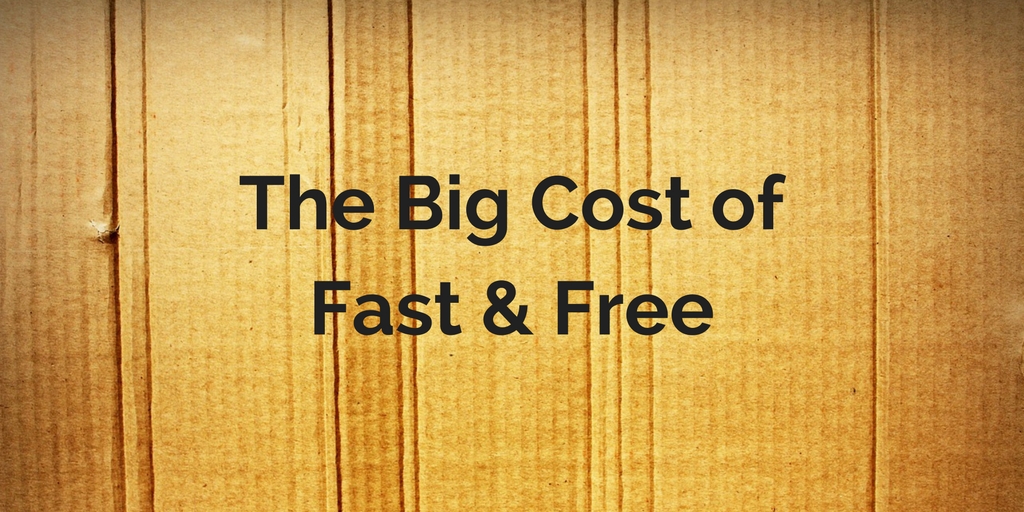Consumer expectations of expedited, free shipping come at a cost to e-commerce businesses — but is it worth it?
The race to deliver orders at an ever-increasing pace — free of charge — is raising the stakes for shippers and retailers. Everything from the size of packaging to the selection of the right carrier has to be examined to prevent e-commerce ventures from becoming financially unviable.
While Amazon, the uncontested super power of e-commerce, has been known to rack up big losses to gain market share, smaller players are battling to meet consumer expectations of two-day, next-day, or even same-day delivery. The Amazon effect also means consumers are less willing to pay anything at all for shipping.
As free shipping is becoming a prerequisite for building customer loyalty, retailers know that charging even a minimal amount to deliver the product can break the deal. If the cost of shipping is perceived to be excessive, 63% of consumers surveyed by Jupiter Media Metrix will cancel the purchase.
In addition, consumers have grown accustomed to adding on smaller items to qualify for free shipping. But those items — one-ounce face creams, eye shadow, ear plugs — frequently arrive at their destination at significant cost. Jupiter found, for example, 45% of companies lose money on shipping.
Shippers also pay the price as small items do not necessarily come packaged in small boxes, consuming valuable space at a time when U.S. trucking tonnage is at record highs. FedEx and UPS both made headlines early last year when they, despite low fuel prices, raised shipping rates, partly as a result of dimensional weight pricing.
Now standard industry practice, dimensional weight pricing is estimated to have increased parcel shipping costs by as much as 20%, an additional expense ultimately passed on to consumers as well as small business owners. And with e-commerce forecast to grow from $392 billion this year to $491 billion in 2018, according to eMarketer Projections, demand will remain high at the same time as the shortage of drivers appears to have no real solution.
Pressure is likely to mount further as Amazon seems to be preparing to launch its own global package-delivery service that could rival those of competitors such as UPS and FedEx. With space on pallets a hot commodity, Amazon kicked off the year by adding thousands of trailers to its fleet, which is transported by third-party carriers. The online giant also hopes to build its own U.S. cargo operations to guard itself against delivery delays that affected some shoppers this past holiday season.
So what is the small business owner with a burgeoning e-commerce business to do?
Since it may be nearly impossible to rival the speed of Amazon Prime, focusing on keeping shipping costs to a minimum should pay off, advise several experts interviewed by Entrepreneur.
Steve Strauss, author and founder of www.smallbiz.com, a small-business consulting site, recommends businesses offer at least one express service and one standard service. “In this competitive environment where there’s very little customer loyalty, things like shipping matters. Look at it this way: If you don’t have a store location, you’re saving on rent and employees. Eat the shipping. It’s a small cost to you, and customers will respond,” he said.
What do you think is the key to staying competitive in the e-commerce space?
This post originally appeared on EBN online.
Related posts:
- Amazon Loves Logistics? The E-Commerce Giant’s Next $400B Opportunity
- Light bulbs to Rugs: Ikea’s Commitment to Reverse Logistics
- Packaging Optimization = Supply Chain Optimization

